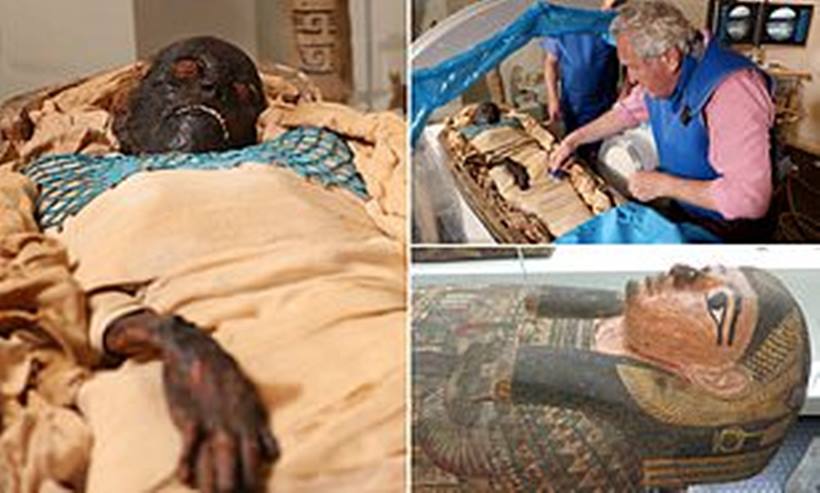Thu 30 January 2020:
A joint team of Egyptologists from Manchester University and Queen University revealed a host of secrets of a mummy after 2,600 years of its death.
The mummy, named Takabouti, was brought to the Ulster Museum in Northern Ireland in 1834 after a wealthy artifact dealer, an Irishman called Thomas Greg, had purchased it and taken it to Belfast, where the trade of Egyptian mummies was legal and widespread. In 1835, the Egyptologist Edwards Hincks decrypted the Hydrographic script that had been inscribed on it.
Hincks found out that her name was Takabouti and that it had been in her twenties, married and living in Luxor when she died and that her father had been a priest at a house of worship dedicated to Amon, the god of the sun.
On the 185th anniversary of the decryption of the script that was inscribed on those mummies, on January 27th, a team of Egyptologists from Manchester University and the Ulster Museum revealed some of the secrets hidden in the mummies’ 2600-year-old corpse.
Takabouti was subjected to X-ray examination, computerized tomography, hair analysis as well as radiocarbon dating, which showed that she died in 660 BC, at the end of the 25th family’s reign.
The most advanced tests, DNA tests, and CT scans yielded surprising results. According to the statement released by the University of Manchester, she had curly hair and it was revealed that her DNA resembles that of contemporary Europeans more than that of Egyptians.
In a statement, the geneticist, Constantina Dorso said: “The genetic footprint of Takabouti is relatively rare as it has not been found – as far as I know – in any ancient Egyptian society, nor is this result consistent with previous studies on whether the ancient Egyptians are more genetically similar to contemporary Europeans than Arabs”.
Other surprises are also mentioned in the statement. The CT scan showed that her heart was well preserved and in good condition and that she died violently, with stab marks apparent on her upper back, next to her left shoulder and that she had been a year older than previously estimated (33 rather than 32)
Dr. Ellen Murphy, a bioarchaeological researcher at the Faculty of Natural Environment at Queen University said: “We often assumed that mummies lived peacefully in their nests, but we now know that her final moments were not well and that she died at the hands of another.”
According to the Egyptologist Issam El-Shamaa, the discovery that Pharaohs had been murdered is unsurprising. In a statement to Asharq Al-Awsat, he says: “the most famous murder case of pharaohs is that which was discovered from the mummy of Ramsis, who was murdered as a result of a conspiracy plotted against him, known as the Harem Conspiracy. Tutankhamen’s death, whether or not she was murdered, remains controversial.”
Shamaa doubts the research teams’ claims that the mummy is of European origins, “her hair and the time period to which she belonged, towards the end of the reign of the 25th family, indicate she had features of the Nubian Family or what is known as the Koushia Family that ruled the Nubian Kingdom which was in power in Egypt for a period.”
He also found it strange that they were surprised at finding a heart in the corpse. The presence of the heart is part of the essence of mummification because the ancient Egyptians believe that it was this organism, not the brain, that gave humans wisdom and memory.
Think your friends would be interested? Share this story!





